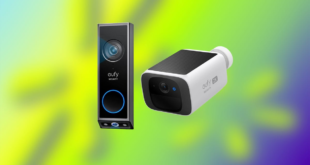Price
You can find a good PC tower from brands like Acer, Asus, Dell or HP for between $500 and $600 that will prove useful for years for general use. The specs we’d suggest for a basic Windows 11 machine:
- Intel Core i5 (13th- or 14th-gen) or AMD Ryzen 5 (6000, 7000 or 8000 series)
- Default integrated graphics (such as Intel UHD or Iris or baseline AMD Radeon)
- 16GB of RAM or more
- 512GB or larger NVMe SSD drive
- Four or more USB 3.1 or 3.2 ports with USB-C and USB-A formats (at least one or two on the front)
- Wi-Fi and Bluetooth wireless
- At least one PCI-E (x16) expansion slot (for adding a video card)
Do you want to do some PC gaming, or do you spend time editing photos or videos? You’ll want to level up the configuration with more RAM and better graphics options. Expect price points to be between $800 and $1,200 (or even higher) if you go for a more bleeding-edge video card.
- Nvidia RTX or AMD Radeon RX graphics card (GPU)
- 16GB of RAM or more
- 450-watt (or more) power supply
Operating system
Microsoft Windows and Apple’s MacOS do basically the same things, but they do them differently. Unless there’s an OS-specific application you need, go with the one you feel most comfortable using. Most desktops run Microsoft Windows while Apple’s iMac, Mac Mini, Mac Studio and Mac Pro desktops feature Apple’s MacOS. There is also the odd Chromebox offering based on Google’s ChromeOS. A Chromebox is easier to use and usually cheaper than a Windows PC or Mac but can’t run Windows or Mac software.
Processor
The processor, aka the CPU, is the brain of a desktop. Intel and AMD are the main CPU makers for Windows desktops. Both offer a staggering selection of processors. You can head to Intel’s or AMD’s sites for explanations so you get the performance you want. Intel’s current lineup is its 13th generation of Core chips, with 14th-gen processors expected in early 2024. AMD’s current desktop processor is its Ryzen 7000 series. Generally speaking, though, the faster the processor speed and the more cores it has, the better the performance will be.
Apple makes its own chips for Macs, which makes things slightly more straightforward. The iMac and Mac Mini feature Apple’s latest M4 processor. The Mac Studio features either an M2 Max or M2 Ultra, while the Mac Pro is based on the M2 Ultra. Again, generally speaking, the more cores it has, the better the performance.
Graphics
The graphics processor (GPU) handles all the work of driving the screen and generating what gets displayed, as well as speeding up a lot of graphics-related (and increasingly, AI-related) operations. For Macs, Apple’s M series processors integrate the GPU. For Windows desktops, there are two types of GPUs: integrated (iGPU) or discrete (dGPU). As the names imply, an iGPU is part of the CPU package, while a dGPU is a separate chip with dedicated memory (VRAM) that it communicates with directly, making it faster than sharing memory with the CPU.
Because the iGPU splits space, memory and power with the CPU, it’s constrained by the limits of those. It allows for smaller desktops such as an all-in-one or SFF PC but doesn’t perform nearly as well as a dGPU. In fact, there are some games and creative software that won’t run unless they detect a dGPU or sufficient VRAM. Most productivity software, video streaming, web browsing and other nonspecialized apps will run fine on an iGPU.
For power-hungry graphics needs, like video editing, gaming and streaming, design and so on, you’ll need a dGPU. Only two real companies make them: Nvidia and AMD, although Intel offers some based on the Xe-branded (or the older UHD Graphics branding) iGPU technology in its CPUs.
Memory
For memory, we highly recommend a minimum of 16GB of RAM. RAM is where the operating system stores all the data for currently running applications, and it can fill up fast. After that, it starts swapping between RAM and SSD, which is slower. Some lower-end models supply only 8GB, which in conjunction with a slower disk can make for a frustratingly slow Windows experience.
Tower PCs will usually have free internal slots for adding more sticks of RAM, but all-in-ones and SFF PCs may not. Even if they do, those DIMM slots could be difficult to access.
Storage
You may still find a cheaper hard drive in a budget desktop and larger hard drives in gaming PCs, but faster solid-state drives (SSDs) have all but replaced hard drives. They can make a big difference in performance. Not all SSDs are equally speedy, and cheaper desktops typically have slower drives. If your PC has only 8GB of RAM, it may end up switching to that drive and the system may slow down quickly while you’re working.
Get what you can afford, but we recommend a minimum of 512GB for a desktop for most users. For storing large media or game libraries, we suggest 1TB or more. If you need to go with a smaller drive, you can usually add a second internal drive to a tower PC. For all-in-ones and SFF PCs, an external drive or cloud storage is usually the easier choice to bolster a small internal drive.
Display
An all-in-one integrates the display with the computer’s components placed not in a tower or small-form-factor enclosure but behind the display or in its base. The trade-off for this space-saving, streamlined design is fewer options for upgrades. For the display, you’ll want a large screen with good resolution. The sweet spots we’d suggest are:
- 24 inches at 1,920×1,080 pixels (aka 2K or 1080p)
- 27 inches at 2,560×1,440 pixels (aka 1440p)
- 32 inches at 3,840×2,160 pixels (aka 4K)
 synnbiob
synnbiob


